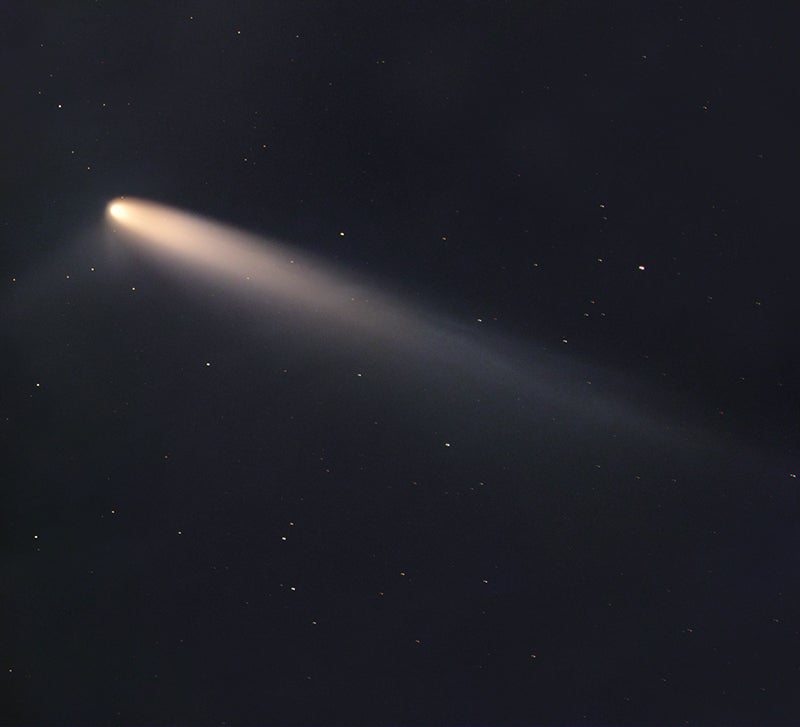Noctis volcano, active throughout Mars’ history, lies near buried glacial ice that makes it an attractive place to search for life.

The Red Planet’s new volcano sits near its equator. Credit: Background image: NASA/USGS Mars globe. Geologic interpretation and annotations by Pascal Lee and Sourabh Shubham 2024.
Near Mars’ equator, a giant volcano has been hiding from us for decades. While the site had been observed by spacecraft since the 1970s, the volcano’s severe erosion disguised it. Researchers now suspect the volcano’s eruptions buried a nearby bed of glacial ice. The discovery, announced at this year’s Lunar and Planetary Science Conference, gives researchers a new location to probe the Red Planet’s geological history.
“We were examining the geology of an area where we had found the remains of a glacier last year when we realized we were inside a huge and deeply eroded volcano,” said study lead author Pascal Lee, a planetary scientist at the SETI Institute, in a press release. The volcano, since dubbed the Noctis volcano, is still waiting on an official name.

Finding a lost volcano
The team has been studying the area where the volcano was found using a wealth of data from a fleet of spacecraft: NASA’s Mars Reconnaissance Orbiter, Mariner 9, both Viking Orbiters, Mars Odyssey, the Mars Global Surveyor, and ESA’s Mars Express Mission.
Located between Mars’ Noctis Labyrinthus and Valles Marineris regions, the Noctis volcano is about 280 miles (450 kilometers) wide and reaches 29,600 feet (9,000 meters) in elevation. Noctis Labyrinthus is a maze of interconnected canyons, while Valles Marineris is often called the martian equivalent the Grand Canyon. (Of course, Valles Marineris is far longer, wider, and deeper than its earthly “counterpart.”)
Researchers had long suspected a volcano in the area, thanks to several geologic clues. These included the presence of deposits of lava and hydrated minerals, both caused by volcanic activity. “A volcanic setting for these minerals had long been suspected,” said Sourabh Shubham, study co-author and graduate student at the University of Maryland. The area also contains layered mesas sloping away from what is now known to be the volcano’s summit, as well as a caldera that serves as evidence of a collapsed volcanic crater that may have held a lake of lava. “In some sense, this large volcano is a long-sought ‘smoking gun,’” Shubham said.
The team also describes some 1,930 square miles (5,000 square km) of volcanic deposits found around Noctis volcano. These deposits, which look like elongated mounds scarring Mars’ surface, might have been formed by escaping steam.

A place for life?
Scientists suspect the volcano was active for a long time, most likely since early in the planet’s history. Still, it is unknown whether the volcano is still active or will erupt again. Still, the area might be a good place to probe for life, as the volcano’s heat, coupled with water from the nearby ice, could make the region more hospitable for life to form or thrive.
“It’s [the Noctis volcano] an ancient and long-lived volcano so deeply eroded that you could hike, drive, or fly through it to examine, sample, and date different parts of its interior to study Mars’ evolution through time,” said Lee. “With glacier ice likely still preserved near the surface in a relatively warm equatorial region on Mars, the place is looking very attractive for robotic and human exploration.”



